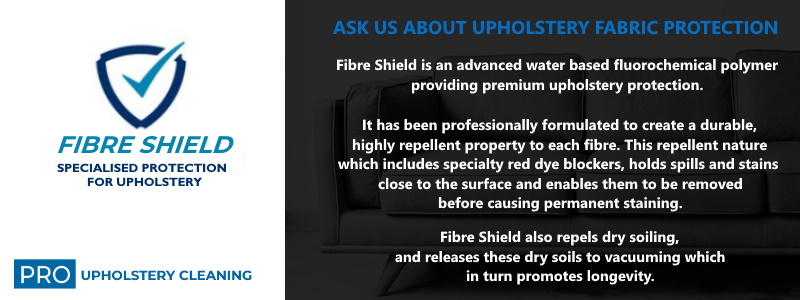Rayon Upholstery
Rayon upholstery is becoming more common as technology progresses and you have probably heard of it or one of its many aliases. But if you have never used it, you may have certain doubts and questions about rayon, and rightfully so, because it’s terrible.
You will find rayon will be sold under the names of viscose, art silk, bamboo silk, banana silk, nitro silk, lyocell, modal, and cuprammonium. If you are purchasing a rug or upholstered furniture and you see one of these names on the description, be prepared to own something that has little to no stain resistance and is the least practical fibre on the market.
The use of rayon dates back as far as the mid-1800s. Count Hillaire de Chardonnet, regarded as the "Father of Rayon," became the first to discover rayon around the mid-1800s. He found the nitrocellulose from wood pulp and rags can be turned into fibre, fabric, and thread. In 1885, he patented his method of manufacturing fibre using cellulose.
Rayon is also the first synthetically manufactured fiber. But due to the natural primary sources, it isn't wholly synthetic. It wasn't until 1924 that the synthetic fiber was coined as 'Rayon.' It was referred to as artificial silk. When you refer to the manufacturers label on your upholstery or even rug and it says “Art Silk”, this is short for artificial silk. It’s fake, synthetic, lookalike-silk.
By 1925, rayon had become an industry and the Federal Trade Commission officially coined the term. The FTC further made two classifications of rayon. One type of rayon had pure cellulose as the primary material. The other had acetate, another cellulose compound.
Rayon was not used for clothing until 1955. It still wasn't a strong fibre. A new type of rayon was then manufactured in 1955 called High-Wet-Modulus rayon. It was much stronger than the previous version. The fabric soon made its way into the apparels industry.
Rayon is now the most used synthetic fiber worldwide, and is very common to appear in clothing. It’s also creeped into the rug and upholstery industry, and many people are discovering how bad this material truly is for these purposes as a result.

How is Rayon Upholstery Made?
Viscose rayon is the most used variety that you will encounter in the upholstery world. It's easy to blend with other synthetic or natural fibres. It also adds a bit of sheen and luster to the appearance of the material, and that’s about as good as it gets.
Rayon is a synthetic material regenerated from cellulose. The primary source is wood pulp. So although it's a synthetic fibre, it has natural elements, which are reactivated when a spillage occurs, making cellulosic browning incredibly easy to happen.
All the different types of rayon go through intense processing for extracting the cellulose, and its environmental impact is staggering.
• For making viscose wood pulp is mixed with sodium hydroxide. The mixture produces alkali cellulose.
• This is then treated with carbon disulfide to form sodium cellulose xanthate.
• The xanthate groups are now hydrolyzed to regenerate cellulose and the carbon disulfide.
• After that, the viscose solution is fed to a spinneret and acid washed. It turns the mixture into strings. The acid wash helps to remove chemicals used in the previous processes.
After all this process, the filaments are finally ready to spin into a yarn and used for its intended purpose.

Characteristics
When used in rugs and upholstery, rayon is complete garbage. This is nothing against the retailers who sell products with rayon viscose, it's just that from a practicality point of view, this is the worst fibre you could get.
Viscose hates moisture and can easily stain. Because the fibres are so weak, even the cleaning process can damage the material even more. Many professional upholstery and rug cleaners won't even touch this material, and it's not because they don't know how to clean it.
A liquid spillage can reactivate the natural properties and cause browning. People will often use a little water to flush out a stain and to clean it up. This will make the problem worse, since more of the original problem is being added.
The fibres can easily break, fray, lose their sheen, and tear. Sometimes, vacuuming can leave permanent marks. The slightest soiling or friction can cause permanent damage, and trying to rectify the problem often makes it worse.
Viscose looks great in showroom conditions; on display and never used. Once it gets exposed to everyday use around your home or workplace, you will quickly start to notice all of these problems and more starting to happen.
You can buy whatever you want, but ours and many other opinion of this material is do not get it if you want something practical and will last a while.
Popular Uses
Unfortunately, this fibre is becoming popular and many unsuspecting customers are being sold this thinking it's real silk. It's not, because real silk can only come from a silk worm; nothing else.
This is leading to it's rise in popularity, and consumers are very often unaware of the terrible practicality and stain resistant properties that this fibre has.
Apart from clothing, where this fibre is actually different and can be cleaned, rayon is most commonly found in rugs firstly and then upholstery. There can been lounges, sofas, couches, chairs, stools, benches, and even dining chairs upholstered in viscose. But just because something can be done, doesn't mean it should be done.
If you want a practical fabric that will last a long time and is even moderately easy to maintain, look elsewhere.
The Best Upholstery
Cleaning Service You Will Ever Try.

